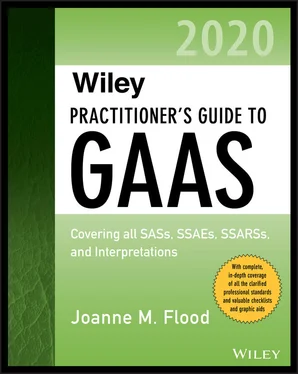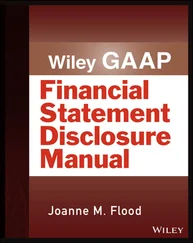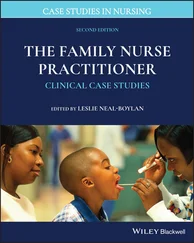The person(s) on the audit team and among those charged with governance who will communicate regarding particular matters.
The form of communication.
The auditor’s expectation that communication will be two-way, and that those charged with governance will communicate with the auditor matters they consider relevant to the audit. Such matters might include strategic decisions that may significantly affect the nature, timing, and extent of audit procedures; the suspicion or the detection of fraud; or concerns about the integrity or competence of senior management.
The process for taking action and reporting back on matters communicated by the auditor.
The process for taking action and reporting back on matters communicated by those charged with governance.
(AU-C 260.A35)
The auditor may discuss matters with management before approaching those charged with governance. In some circumstances, for instance, where management’s competence or integrity is involved, it would be appropriate to go directly to those charged with governance. In other circumstances, it might be helpful to go to management or to those in the internal audit function to clarify facts. (AU-C 260.A38)
Form of Communication and Documentation
If it is the auditor’s judgment that communication is not adequate, the auditor should communicate in writing significant findings from the audit (see “Matters to Be Communicated”). If matters are communicated during the audit and satisfactorily resolved, those matters do not have to be documented. (AU-C 260.16) All other communications may be oral or in writing. When matters are communicated orally, the auditor should document them. (AR-C 265.20)
The auditor should communicate with those charged with governance on a sufficiently timely basis to enable those charged with governance to take appropriate action. (AU-C 260.18)
Evaluating the Communication Process
The auditor should evaluate whether the two-way communication between the auditor and those charged with governance has been adequate for the purpose of the audit. If the communication between the auditor and those charged with governance has not been adequate, the auditor should assess the effect on risk and the ability to obtain sufficient audit evidence, and should take appropriate action. (AU-C 216.19)
Qualitative Aspects of Accounting Practices
Auditors should seek to have an open and constructive communication with those charged with governance about the qualitative aspects of the entity’s significant accounting practices. This communication may include comment on the acceptability of significant accounting practices.
When making this communication, the auditor should explain why he or she considers the practice not to be appropriate. When necessary, the auditor should request changes. If requested changes are not made, the auditor should inform those charged with governance that the auditor will consider the effect of this on the financial statements of the current and future years, and on the auditor’s report.
The AU-C 260.A48 Appendix includes matters that may be communicated, such as the following:
The appropriateness of the accounting policies to the particular circumstances of the entity, considering the need to balance the cost of providing information with the likely benefit to users of the entity’s financial statements. Where acceptable alternative accounting policies exist, the communication may include identification of the financial statement items that are affected by the choice of significant policies as well as information on accounting policies used by similar entities.
The initial selection of, and changes in, significant accounting policies, including the application of new accounting pronouncements. The communication may include the effect of the timing and method of adoption of a change in accounting policy on the current and future earnings of the entity, and the timing of a change in accounting policies in relation to expected new accounting pronouncements.
The effect of significant accounting policies in controversial or emerging areas (or those unique to an industry, particularly when there is a lack of authoritative guidance or consensus).
The effect of the timing of transactions in relation to the period in which they are recorded.
For items for which estimates are significant, issues discussed in AU-C 540, Auditing Accounting Estimates , Including Fair Value Accounting Estimates and Related Disclosures , include, for example:
Management’s identification of accounting estimates
Management’s process for making accounting estimates
Risks of material misstatement
Indicators of possible management bias
Financial Statement Disclosures
The issues involved, and related judgments made, in formulating particularly sensitive financial statement disclosures (for example, disclosures related to revenue recognition, going concern, subsequent events, and contingency issues)
The overall neutrality, consistency, and clarity of the disclosures in the financial statements
The potential effect on the financial statements of significant risks and exposures, and uncertainties, such as pending litigation, that are disclosed in the financial statements.
The extent to which the financial statements are affected by unusual transactions, including nonrecurring amounts recognized during the period, and the extent to which such transactions are separately disclosed in the financial statements.
The factors affecting asset and liability carrying values, including the entity’s bases for determining useful lives assigned to tangible and intangible assets. The communication may explain how factors affecting carrying values were selected and how alternative selections would have affected the financial statements.
The selective correction of misstatements—for example, correcting misstatements with the effect of increasing reported earnings, but not those that have the effect of decreasing reported earnings.
Requirements to communicate with those charged with governance are included in other AU-C sections, and readers should refer to those sections in this book: AU-C Sections 210, 240, 250, 265, 550, 560, 570, 600, 705, 706, 720, 730, 930, and 935.
8 AU-C 265 Communicating Internal Control Related Matters Identified in an Audit
Scope
Definitions of Terms
Objective of AU-C Section 265
Requirements
Determining Whether Deficiencies in Internal Control Have Been Identified
Indicators of Material Weakness
Communication of Internal Control Related Matters
Management Response
Interpretations
Communication of Significant Deficiencies and Material Weaknesses Prior to the Completion of the Compliance Audit for Participants in Office of Management and Budget Single-Audit Pilot Project
Communication of Significant Deficiencies and Material Weaknesses Prior to the Completion of the Compliance Audit for Auditors Who Are Not Participants in Office of Management and Budget Pilot Project
Appropriateness of Identifying No Significant Deficiencies or No Material Weaknesses in an Interim Communication
AU-C 265 Illustrations
The previous chapter, on AU-260, addressed the auditor’s responsibility to communicate with those charged with governance regarding the audit. AU-C 265 addresses the auditor’s responsibilities regarding communicating to management and those charged with governance identified deficiencies in internal control. (AU-C 265.01)
Читать дальше












